Inside My Terminally Ill Friend's Final Party Before Ending Her Life
Betsy Davis, “the Queen of Plastics,” was an artist whose work inspired me before I ever met her. I saw one of her meticulously geometric, florid laser cut plastic sculptures on a friend’s wall. It stopped me in my tracks.
When I finally met Betsy at a party, I was struck by her beauty and cool demeanor. I never thought I’d be worthy of being her actual friend. But we forged a bond in the 12 years leading up to her death last month.
For many people in my life, if they were going through something like dying of ALS, I would keep quiet out of respect for them. But for Betsy, I’m sharing her story out of respect for her. She did not ask to go quietly; she asked to go loudly and proudly, in a weekend celebration surrounded by beloved friends and family.
After Betsy died, her sister asked we honor her by “doing something unexpected: Make art. Make meaning. Talk to a stranger. Break a rule.” And so I share her Rebirth Ceremony with you.
I’ve never known exactly when someone was going to die. Until a recent Sunday, as I struggled to put on my friend, Betsy’s, red Donna Karan wrap dress. I’m definitely doing it wrong. I can tell because Betsy groans with frustration. She’s unable to talk because she’s in the final stages of ALS, a neurodegenerative disease that slowly deprives one of the power to move, speak, eat and breathe. She tries to explain this fabulous, complex frock by nodding out the letters of the alphabet, literally spelling it out for me. I guess, in a game of involuntary charades.
“A…B.”
“B! Bow? You want me to tie a bow right here?”
No.
“A… B.”
“Backwards? Oh. It’s on backwards.”
After ten minutes of trial and error, I get her approval. I’m ready for the Rebirth Ceremony. In two hours, she will die, exactly as planned. Let me explain.
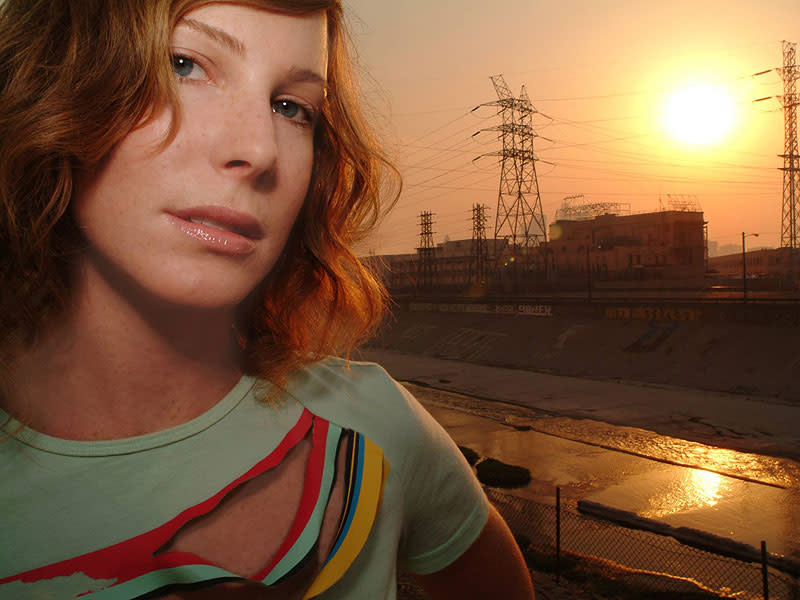
On June 9, 2016, the End of Life Options Act, a law that permits terminally ill adults to take an aid-in-dying medication, went into effect in California. Three weeks later I got an email from Betsy, an artist at the end of a 3 year battle with ALS. The subject line read, “Planet Earth.” She was “preparing her departure, yet another great adventure.” She’d met with doctors, filed paperwork, and this was the window where she could self- administer the drug. It would be July 24. Sunset.
Her phrasing made it sound as if I’d been invited to a swinging shindig. A number of thoughts flew through my mind, “I’m not worthy,” chief among them. But if your name makes that list, there is only one answer. I RSVP'ed as if it were Sunday brunch. “I’m in!”
We soon received rules of conduct, subject line, “The Party.” 1. no crying in front of Betsy, 2. only joyful and light interactions, and 3. Betsy may cry in front of us. There was a schedule, much like a wedding itinerary, which included happy hour cocktails leading up to a Sunday Rebirth Ceremony. There was even a rehearsal dinner (well, pizza and a Jodorosky movie) the night before. I locked in for a mind-bending weekend in Ojai.
A cursory Internet search into whether this was the first assisted suicide in California did not give me the answer I was looking for – but it certainly gave many vehement arguments against I was about to do. It hadn’t occurred to me that it could be wrong, because this was clearly what she wanted.
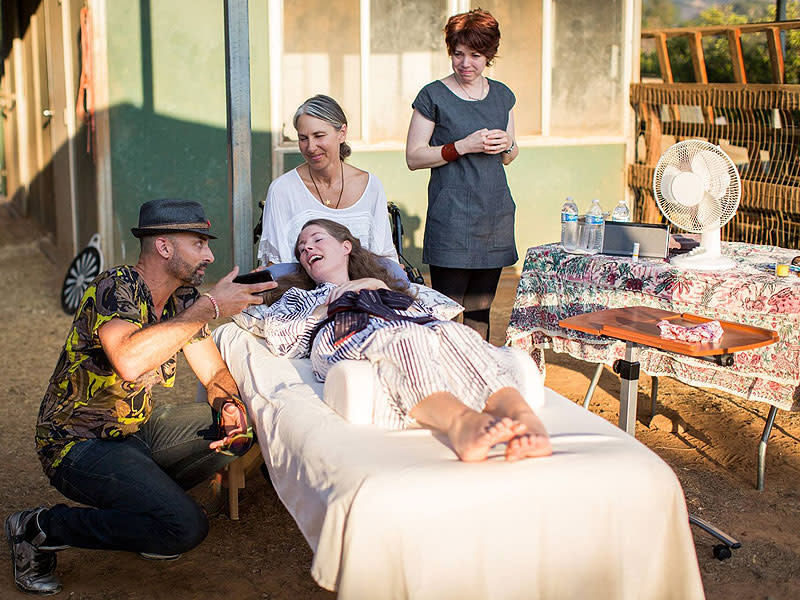
I knew what it was like to watch someone slowly and painfully expire. When my father-in-law died of cancer, we clung to his precious last moments of consciousness, fearful the palliative drugs would take him away too soon. In retrospect, his suffering could have been avoided if he’d taken the drugs sooner.
But now I was reading this was a “slippery slope.” Poor people may be socially pressured into death, to spare their family resources. Insurance companies might withhold treatment from someone with low odds of survival because it’s cheaper to simply let them go. I already had nerves, but now they were amplified. According to one blog, I should “protest what she was attempting, in order to give her strength to live on.” Maybe if her friends refused to let her die, she would write a book, become the next Stephen Hawking? Were we making a huge mistake?
My friends and I rented a house in Ojai, close to Betsy’s, for the weekend. We understood our job was to have as much fun as possible, so she experienced authentic joy in her final hours. All jokes must be actually funny. All laughter, legit. We would not eff this up. Our combined anxiety vibrated as we numbly ate breakfast before heading to Betsy’s house for the Rebirth Ceremony.
Then, as we ate, a quiet man named Mat who I’d known for years but never really talked to, spoke up. He told us, shy at first, that his dad died of ALS when he was 16. Of course, there was no End of Life Option Act then. The “natural way” to go from ALS is suffocation or choking. Mat’s father did not want either. One day, Mat’s father said goodbye to his kids. They told him they loved him and weren’t allowed to see him again. He stopped eating. The most “painless and swiftest” way to go took 6 days.
Mat was grateful Betsy could depart painlessly and surrounded by loved ones. He asked if it was hard to plan her death, she responded, “Dying is easy. Try living in this body. That’s hard.” After that I didn’t look back.
Betsy’s ALS diagnosis was the least interesting thing about her: a brilliant, motorcycle driving, world-traveling pioneer of laser cutting sculpture – who just happened to be a statuesque beauty with a keen sense of style.
We dressed to the nines for her Rebirth Ceremony. On a scale of “natural” to “drag queen,” I was a solid Liza Minnelli.
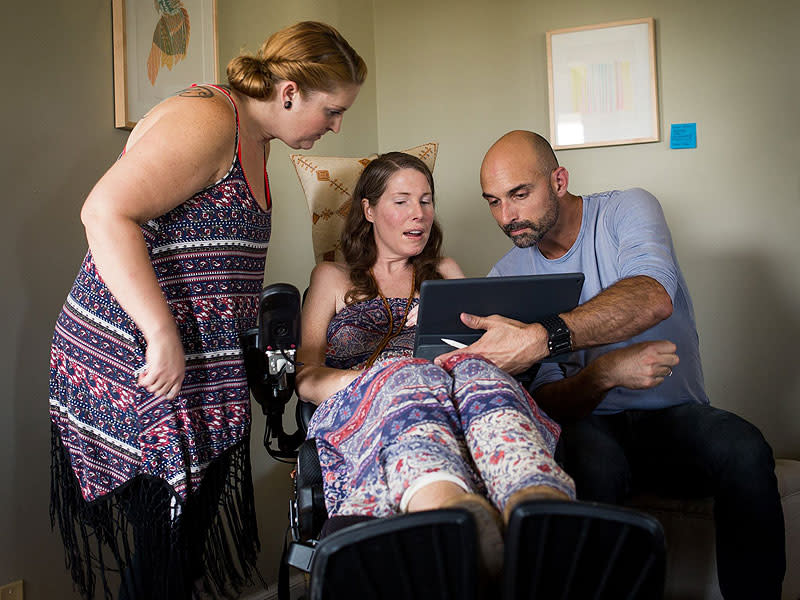
I reviewed what I knew would happen: at 4 p.m., we would have tamales. From 5–7 p.m. we would drink cocktails while picking out Betsy souvenirs – “everything must go.” Around 7 p.m. Betsy would don a ceremonial Japanese robe and go up the hill by her house. There we would gather as she took a jello-based concoction of pentobarbital and morphine, a barbiturate similar to what Marilyn Monroe and Judy Garland took at the time of their accidental deaths. Old Hollywood style.
The drug had to be self-administered, and there was a lot of it. She had to stay strong enough to move her hand to her mouth and swallow the entire dose. She would go into a coma in 5 minutes, it would take 1- 48 hours to reach her final destination. Would she get it all down? Would it stay down?
I spoke with the attending physician about this new realm of medicine. She attended continuing education seminars and leveraged a peer to peer network with MDs in Washington. A trove of medical research also exists from countries like the Netherlands, where euthanasia has been practiced for years.
When we arrived at Betsy’s house she was laughing, surrounded by friends who hugged her and took photos. Her relatives, a Catholic nurse among them, were curious how we “young people” felt about the whole thing. Girded by Mat’s story, we focused on the positives. One friend brought balloons altered to read, “Happy Re-Birthday.” Betsy’s photographer friend documented everything like a wedding.
Betsy wanted her things to “live on through us,” so a fashion show emerged as we tried on her clothes. I found a red dress from her performance art piece at the Getty Museum, a stunning number so complicated I asked her professional stylist friend, Amanda, for help. Amanda was stumped too, and we realized if we didn’t ask Betsy how it worked before 7 p.m., we’d never figure it out.
Gandalf said, “It doesn’t matter how much time you have, it’s what you do with it.” When Betsy had exactly two hours left, she spent 10 minutes explaining out how the hell to put on a wrap dress.
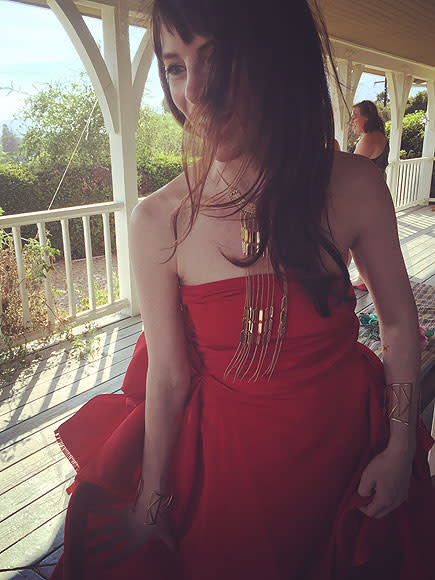
Betsy’s suffering was palpable beneath the joy. Layers of fatigue and disappointment behind her eyes as she tried to communicate. Days earlier she’d texted a friend, “I am so ready to leave this body.”
An hour before the ceremony she answered questions I’d emailed earlier. To someone facing a similar situation, she advised, “know yourself and your strengths” and leverage them. How did she curate a guest list for “the most exclusive party of the century?”
She originally only wanted five people. But once her caregiver typed up the email, it expanded to 30 loved ones who inspired her – she didn’t think we’d come. It was only after being flooded with RSVP’s she thought, “Well. I guess we’ll get tamales.”
As we spoke, Mat, who was an architect, periodically checked in to clarify the “floor plan” of the ceremony site, ensuring that everything was just so. He wore a kimono top she’d bought on a trip to Japan. She loved it.
Around 6 p.m. we were asked to step outside so Betsy’s family could have some alone time. It was golden hour, the sun low in the sky. A Tesla Model X with “Falcon wing” doors was at the ready to transport her to the ceremony site. Betsy’s father stepped outside and thanked us for coming. Nothing will ever prepare you for the face of a man about to lose his daughter. His strength and love, as he was relentlessly tested by his artist daughter, until the very end. It was heartbreaking.
We were instructed to walk up the hill to a vista where white shade tents, a massage table and an alter stood before white folding chairs – once again, like a wedding. We hiked up a perilously steep snake- hole filled hill, decked out in glorious Betsy attire, and prevented one another from “stealing the show” by falling off the cliff.
RELATED VIDEO: Brittany Maynard’s Legacy: One Year Later
She was lifted into the Tesla X, laughing with joy as the Falcon doors closed, radiant in her blue and white robe. Despite our collective uncertainty, we cheered her on as she was wheeled into the ceremony site. Lots of hooting and hollering, as if she’d just kissed the bride.
She lay on the massage table as soothing chime music played. Caretakers futzed over her hair but kept getting it wrong until she mumbled “Amanda!” Her stylist friend came and lovingly finger-combed her hair until it was perfect and tied her kimono sash into a pristine bow. She looked like the famous Millais “Ophelia” painting.
There was an awkward pause in which we heard the medicine was delayed due to “technical issues.” In this extended silence, sniffles from the crowd betrayed us. I looked around at the tear streaked cheeks of 30 friends trying to keep it together. The sun glowed gently on Betsy’s face. Her caregiver arrived with the medicine and we were instructed to leave so she could consume the entire dose without distraction. I walked past Betsy, smiled and said “You’re beautiful. See you later.” Her face was full of tears.
We walked down the hill and heard a primal scream.
My first thought was that Betsy was mad at us for crying and making her sad. Another friend thought she was unleashing her rage and frustration at this disease that robbed her of everything she had. A third said there was no way she was physically capable of making the sound – it was someone else. Regardless of what it “meant,” it was a reflection. Death has no answers, it just holds up a mirror and asks who you are and who you want to be.
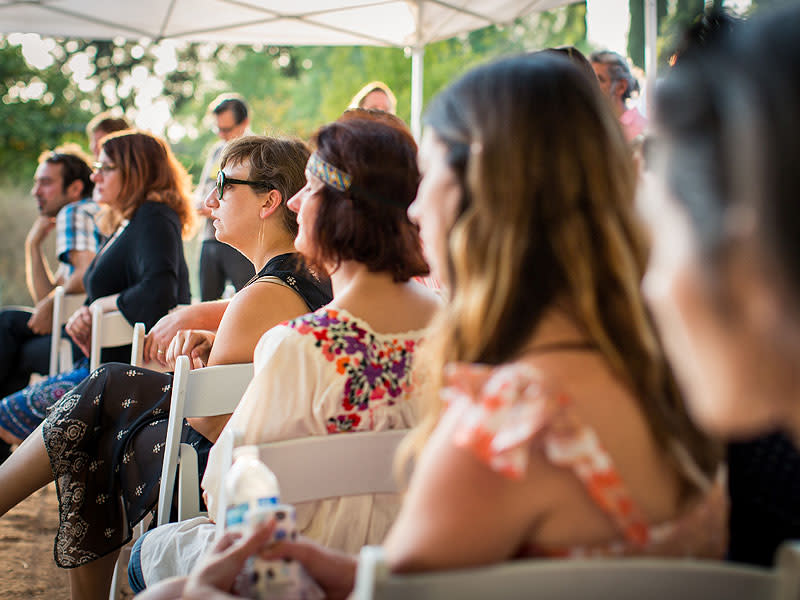
Back at the house we sat on the porch in the twilight. Most cried. A few chanted ohms, in hopes it might “energetically” help her take the medicine.
After about 15 minutes we got an update: she’d successfully taken all the medicine and was in a coma. The doctor said her heart was strong. It would be many hours, possibly a day, before she passed. Guests dispersed and she was moved into the house. Per her request – and only after the doctor assured us we couldn’t possibly wake her – her friend and I rubbed frankincense and various oils on her hands and feet. As I touched her, she made a joyful sigh and smiled from another dimension. It was time to leave her family in peace. We walked outside and gazed at the stars. Before we made it to the car, her brother-in-law came out and told us she had passed. It was 10:35 p.m.
We were there for her, but also for ourselves.
I got to be there for a friend. Mat got to see ALS end better for Betsy than it did for his father. Others were there out of love, curiosity, a fascination with mortality, a sense of being part of history. All of the above.
I can’t help but wonder what could have been if my father in-law had an End of Life Option. It’s not for everyone, but in Betsy’s circumstances, it was the best path. Does this change the way we die? Maybe. While it provides the opportunity to spare horrific suffering, others must be protected from the “slippery slope.” It’s an option that must never be offered; only demanded as a last resort.
Surrounded by devoted family, friends and former lovers adorned in her fabulous clothes, Betsy gave a carefully art directed glimpse into life’s most mystifying and inevitable moment. Was this her final piece of performance art? I'lI never know, but I’m glad I got to be there.
ALS is listed as the “cause of death” on Betsy’s death certificate, per the End of Life Option Act. Since it’s a trigger topic, here is the National Suicide Prevention Lifeline: 1–800–273-TALK (8255). Callers will be connected to a skilled, trained counselor at a crisis center in their area, anytime, 24/7.
This story first appeared on Medium.com

